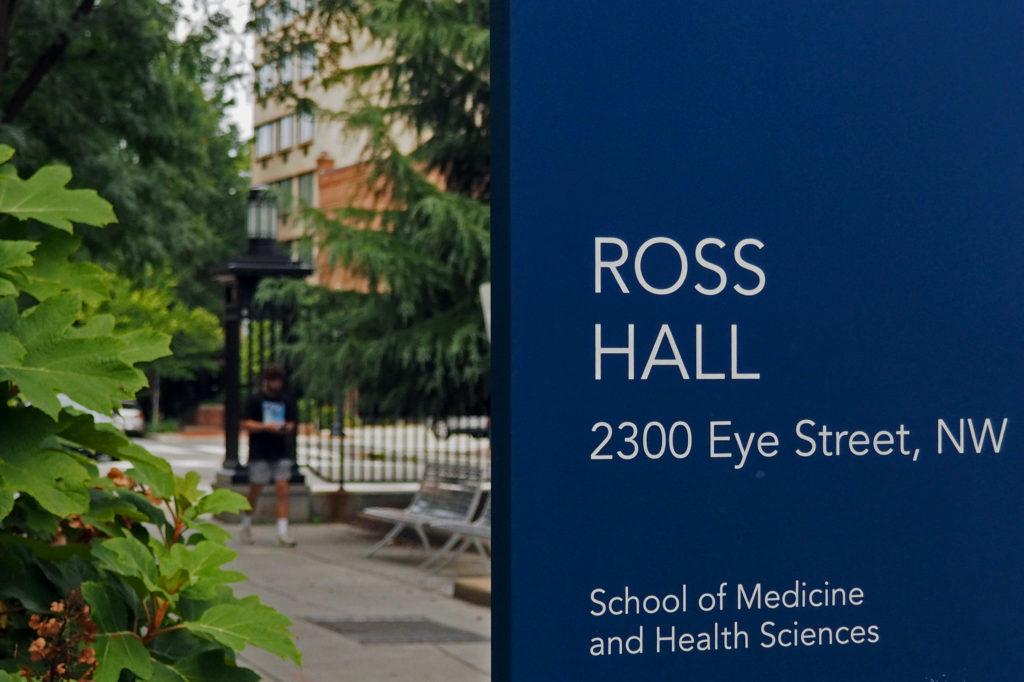Three engineering professors are analyzing the University’s energy system on campus to propose a model for other city buildings of similar sizes.
Saniya LeBlanc, an associate professor of engineering and the lead researcher of the study, said her team, which received funding from the Department of Energy in May, will spend two years examining a collection of buildings on the University campus which all share the same energy system. She said her team is using the power plant in Ross Hall as a “case study” to test out new technologies and propose a model that can improve the efficiency and reliability of urban buildings in events like storms and heat waves.
“The project will specify measures that improve combined heat and power plant efficiency, increase backup power capacity and diversify district energy system technology portfolios,” LeBlanc said in an email. “The project will also enhance district energy system reliability and resilience.”
LeBlanc said her team is proposing an energy system with a combined heat and power plant as the most efficient system for public urban buildings. Combined heat and power plants reuse the heat, which is released as waste while electricity is generated as a source of energy for heating and cooling buildings, according to the Department of Energy’s Office of Energy Efficiency and Renewable Energy page.
LeBlanc said her team, which includes two other engineering professors and several undergraduate students from the School of Engineering and Applied Science, wants its research to be broadly applicable to any urban area rather than just to people from one specific urban building.
Ekundayo Shittu, an associate professor of engineering and a researcher with the project, said the team will study the cost and amount of energy the University consumes.
Shittu said both residence halls and academic buildings are part of the study, because the energy usage among buildings differs depending on factors like the number of people in them. He said the team is focusing on making sure the sources of energy that the University’s energy system uses provide “clean” electricity.
“One of the things we are also looking at in terms of equity is access to clean electricity,” Shittu said. “The idea is when you talk about resiliency, reliability and vulnerability, it all goes down to enhancing and fortifying the sources of supply.”
Once LeBlanc’s team enhances the technologies in GW’s energy system, the University will be resilient enough to provide resources to neighboring communities in times of natural disasters, because it won’t lose electricity and water, according to the project’s report.
Shittu added that the researchers are studying how suppliers, buildings, consumers and different operating technologies can be adjusted and manipulated to improve the efficiency of an energy management system.
“Research has contingencies,” Shittu said. “One topic leads to another and bleeds to the next, and before you know it, there’s a couple of ecosystems around the particular topic.”
S.A. Sherif, an energy management professor at the University of Florida, said a combined heat and power system, like the one the researchers are studying in Ross Hall, is a “good concept” for urban centers, because it involves maximizing heat that would be wasted during the electricity generation process to get more power out of it.
“Available energy is a precious commodity, and anytime you can use an energy that’s available to you instead of dumping it, it’s always going to be a good thing to do,” Sherif said. “So from the societal perspective, the broad societal perspective, it’s a good thing to try to get more out of the energy.”
Sherif also said the University’s combined heat and power system proposal can help make GW more independent because it allows the University to generate its own electricity on site, instead of always relying on obtaining fuel from suppliers.
“Every time you have a power outage, you could lose a whole day with, of course, the productivity,” Sherif said. “It becomes paramount that manufacturing facilities have their own backup power so that they wouldn’t have to have that problem.”
Sherif said another method to collect power is to use solar panels which will transfer the energy from the sun into electric power that the buildings can use.
The researchers are also proposing solar roof panels, which the University uses, as another form of energy for urban management systems, in addition to the proposed heat and power plant, according to the study’s summary report.
Sherif said photovoltaic panels, the type of panels the researchers are using, have batteries which store the energy from the sun during the day and “discharge” some of the energy at night when the sun is no longer out.
“If you’re collecting heat from the Sun, then you’re going to have to store that heat so that it can be used in the nighttime,” Sherif said. “You could store that heat simply by storing it in banks.”







